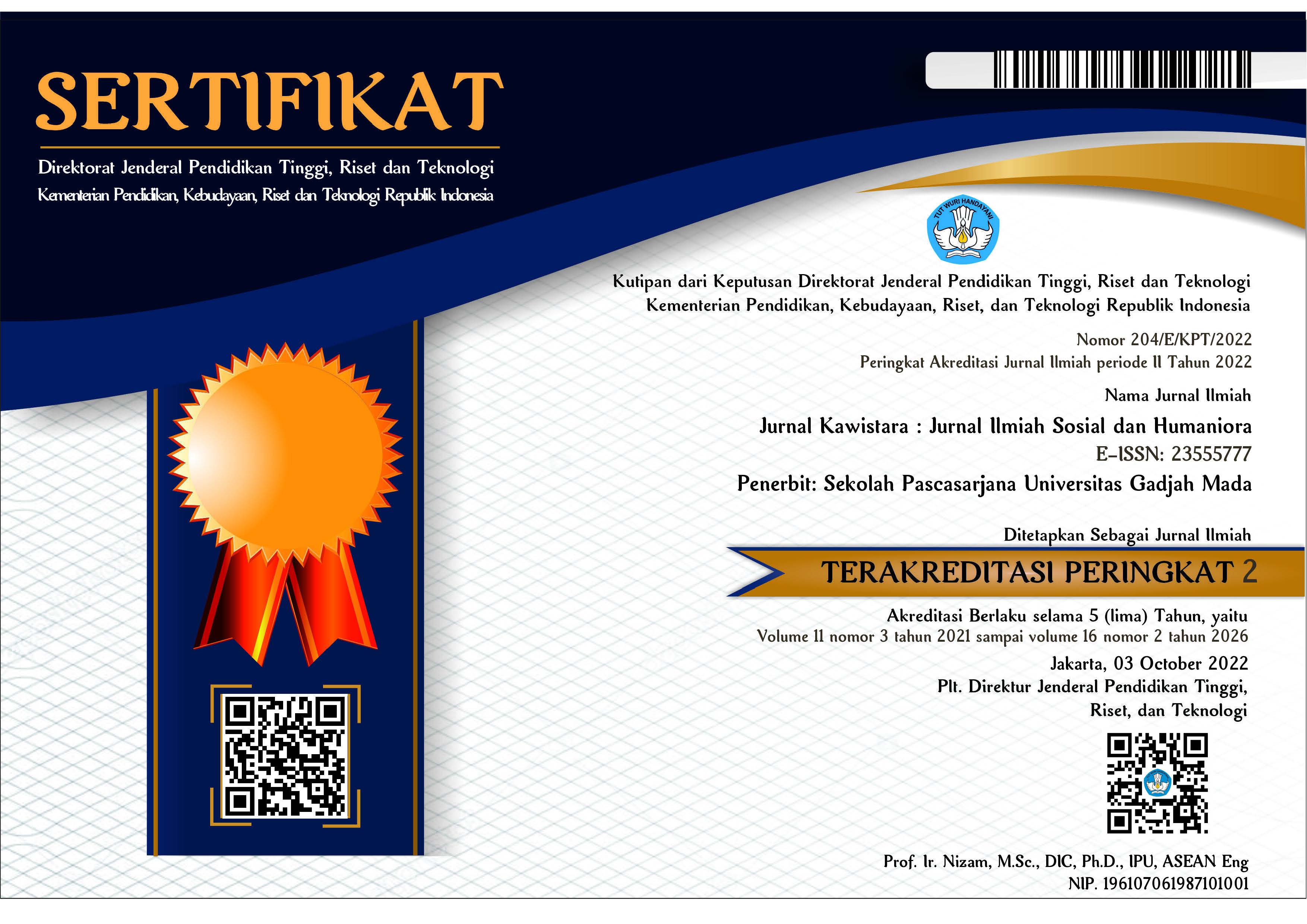The Factors of Rice Farmers’ Poverty in Indonesia: The Perspective of Land Conversion, Land Ownership Area, and Agriculture Technologi
Septian Widyanto(1*), Leksono Probo Subanu(2)
(1) Master in Urban and Regional Planning, Department of Architecture and Planning, Faculty of Engineering Universitas Gadjah Mada
(2) Faculty of Engineering, Universitas Gadjah Mada
(*) Corresponding Author
Abstract
Rice is very important as Indonesia’s main staple. It contributes a lot to the national expenditure where more than 80% of households of every social class consumed rice. There is a high demand level for rice but there is a limited number of farmers. Of 70% of households in rural that work in the agricultural sector, only 50% grow rice, and most of them are poor farmers. Almost 52% of Indonesia’s rice is produced at Java Isle. However, production growth is only 0,7% given the rapidly increasing number of people and land conversion over the past 7 years. Most Indonesian farmers are classified as small farmers has average land ownership of only less than 0.5 hectares, making them can’t innovate and only can fulfil their basic needs without saving for investment. This is made worse by around 35% of farmers don’t own their land. Technology usage also become an issue where 85% of farmers don’t use internet and 45% are not used in using mechanical technology. The purpose of this research is to find the effect of paddy land conversion, land ownership area, and agriculture technology on farmer’s poverty in Indonesia. By using multiple regression method on 6 independent variables data from all Indonesia provinces, we found that the most significant variable to reduce farmer’s poverty is land ownership area. The statistical result is supported and cross-checked by data and related policies from literature review, and interview with some stakeholders from Ministry of Agriculture, local government, paddy farmer representative, and agriculture instructor.
Keywords
Full Text:
PDFReferences
Braun, Joachim Von and Alisher Mirzabaev. (2015). Small Farms: Changing Structures and Roles in Economic Development. ZEFDiscussion Papers on Development Policy No. 204.
Clinten, Bill. (2020). Cakupan 4G di Indonesia Kurang dari Setengah Wilayah. https://tekno.kompas.com. Accessed 24th August 2022.
Creswell, John.W. Research Design:Qualitative, Quantitative, and Mixed Methods Approaches. 2009. California:SAGE Publications.
Daris, Edmon, et al. (2017). Determinants of Paddy Fields Conversion in Java Island, Indonesia. Advances in Intelligent Systems Research (AISR) Vol.149.
Ginsburg, N., Koppel, B., & McGee, T. G. (1991). The extended Metropolis: Settlement
transition in Asia. Honolulu: University of Hawaii Press.
Goedde, Lutz, et.al. 2020. Agriculture’s connected future: How technology can yield new growth. https://www.mckinsey. com/industries. Accessed 22 September 2022.
Harini, Rika. Yunus, Hadi Sabari, et al.(2012). Agricultural Land Conversion: Determinants and Impact for Food Sufficiency in Sleman Regency. Indonesian Journal of Geography Vol.44 No.2
Indonesia Statistic Central Bureau.Secondary data related to paddy field area, land ownership, farmers poverty, and agriculture technology. https://www.bps.go.id/
Koirala, et al. (2014). Impact of Land Ownership on Productivity and Efficiency of Rice Farmers: A Simulated Maximum Likelihood Approach. Agricultural and Applied Economics Association (AAEA) Annual Meeting, Minneapolis, MN, July 27-29, 2014.
Mandang, Miranda, et al. (2020). Karakteristik Petani Berlahan Sempit di Desa Tolok Kecamatan tompaso. Agri-Sosio Ekonomi Unsrat Vol. 16 No.1
Mulia, Khamila. (2019). Indonesian agritech:complicated, but promising. https://kr-asia.com/indonesian-agritechcomplicated-but-promising. Accessed on 14th June 2022.
Myers and Well. (2003). Research Design and Statistical Analysis Second Edition. New Jersey: Lawrence Erlbaum Associates.
Philippines Department of Agrarian Reform. 2009. CARPER (Comprehensive Agrarian Reform Program Extension with Reforms) RA 9700. Online at http://www.dar.gov.ph, accessed on 24th June 2022.
Rondhi, M. dan A.H. Adi. (2018). Pengaruh Pola Pemilikan Lahan terhadap Produksi,
Alokasi Tenaga Kerja, dan Efisiensi Usaha Tani Padi. AGRARIS: Journal of Agribusiness and Rural Development Research.
Sehgal Foundation. (2021). Role of Modern Technology in Agriculture. https://www.smsfoundation.org. Accessed 15 July 2022.
Shahbandeh, M. (2022). Top countries based on production of milled rice 2020/21.
https://www.statista.com/ accessed on 14th April 2022.
Soemarno, B. Prasetya and Z. Kusuma. (2016). Pengelolaan Sumberdaya Lahan Sawah Berkelanjutan. Buku 1 (lahan sawah), Jurusan Tanah, FP UB. Page. 240.
Statista Research Department. (2022). Percapita rice consumption in Indonesia 2010-2030. https://www.statista.com/accessed on 17th April 2022.
Sumaryanto, N.Syafa’at, M.Ariani, dan S.Friyatno (1995), Analisis Kebijaksanaan Konversi Lahan Sawah ke Penggunaan Nonpertanian, Bogor: Badan Litbang Pertanian.
Susilowati, Sri Hery, and Maulana, Mohamad. (2012). Farm Business Land Size and Farmers Welfare: Smallholders Existence and Agrarian Reform Urgency. Analisis Kebijakan Pertanian Vol.10 No.1.
United Nations. (2018). The World’s Cities in 2018.
Untari, Herdjiono, Maria V.I., 2020. Land Owning Patterns on Rice Farming:Increasing Production and Efficiency. Jurnal Ilmiah Pertanian Vol, 16 No. 2.
Article Metrics
Refbacks
- There are currently no refbacks.
Copyright (c) 2023 Septian Widyanto; Leksono Probo Subanu

This work is licensed under a Creative Commons Attribution-ShareAlike 4.0 International License.
Jurnal Kawistara is published by the Graduate School, Universitas Gadjah Mada.







